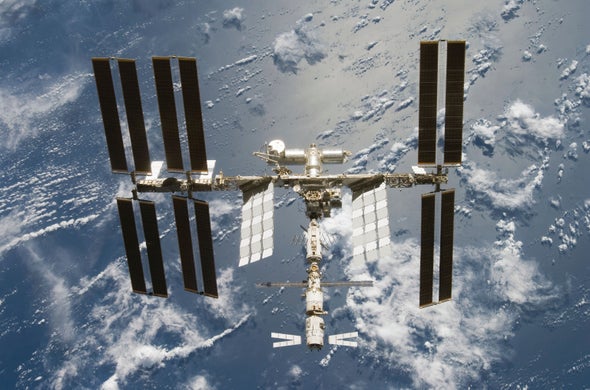|
|
"Buffalo
Bob" |
|
|
It's
crucial to our exploration of the solar system, but this marvel of
innovation has not always had the support it deserves.
In 1984 when President Reagan
directed NASA to build a permanently occupied space station, no one
could have predicted the critical role it would play in human space
exploration nearly four decades later. The International Space
Station (ISS) took 12 years to build with support from 16 nations and
has been populated continuously since November 2000. A colossal
achievement by any measureóthe station weighs a million pounds and is
the single most expensive object ever built. And it should be. Truly a jewel in the crown of
human achievement, the ISS gave the U.S. and its partners an operational
outpost in the most austere environment ever known. Over its lifespan,
more than 2,400 experiments have been conducted by more than 230
visitors from 18 countries. The station's crew have logged over 1,300
extravehicular activity (EVA) hours on more than 217 spacewalks. Over
their lifetime, teenagers have seen a constant revolution in technology,
some of it exclusively the result of space access and research. But this marvel of innovation
has not always had the support it deserves. Since the high point of the
Apollo program, NASA endured criticism for being too focused on
sustaining the space shuttle at the expense of deep-space exploration.
Not surprisingly, political support and funding atrophied as a result.
Indeed, in 1993 the station came a mere one vote away from termination
in the House of Representatives. And yet, while few were
watching since the shuttle stood down in 2011, a new and reinvigorated
agency is emerging with a vision that should captivate even the cynics.
Under Space Policy Directive 1 (SPD-1), NASA and the ISS National
Laboratory are accelerating the nation's push into commercial space.
With an expected trillion-dollar space economy to come, the ISS can play
a defining role in the formation of the industry. Aboard the ISS, an array of
basic and applied research programs are underway with participation of
companies such as Boeing, Anheuser-Busch, Sanofi, LambdaVision, Space
Tango, Airbus, and Teledyne Brown Engineering. Beyond the major policy shift announced in June to
allow for greater commercial partnerships aboard ISS, other major
milestones are underway. Last month, NASA and Boeing assembled 80
percent of the massive core stage needed to launch the Space Launch
System and Orion on their first mission to the Moon: Artemis 1. Notably, NASA's "new" charge to
facilitate and encourage the commercial sector is nothing new. After
all, NASA has fostered some of the greatest technological developments
in all of human history. And later this year, NASA's Commercial Crew
transport will launch from Cape Canaveral to resupply the ISS. But no one should take for granted the colossal
task of maintaining this orbital toehold. Despite being sheltered within
our planet's magnetic shield, the ISS has endured a battering equivalent
to an aircraft carrier in World War II's Battle of Midway. Shuttle
veteran Alvin Drew recounted to the U.S. Chamber of Commerce a year ago
his EVA experience with razor sharp ISS exterior surfaces because of the
sandblasting effect of the low Earth orbit environment. Just maintaining the operational status of the
station alone is an achievement. Over the decades NASA and Boeing, as
prime contractor, have stretched and maximized the platform as a test
bed to fully evolve our understanding of microgravity's effect on
metabolic systems. Humans are fragile after all. But SPD-1 boldly charts
out human exploration to the Moon, Mars and beyond. With ISS as its point of departure, NASA's
recently announced Lunar Gateway Program will be the platform to
prepare and propel humans to Mars. To paraphrase Administrator James
Bridenstine, Gateway will be the permanent lunar command module. And in 2024 Gateway will facilitate the mission
objective of Artemis 1 to land astronauts near the Lunar South Pole. But
we can't get there from hereónot without the ISS. The lion's share of
onboard station research is aimed at solving long-term challenges for
human survival in deep space. The ISS is the tethered ship from which
astronauts will hone spacefaring skills to venture beyond the proverbial
horizon. In this new era of exploration, the ISS is
allowing the right questions to be asked and answered. One could say
that, to date, we have been consumed with identifying the limitations
inherent in humanity's reach into space. Yet recently, we have begun to
ask a more nuanced and intriguing question: What are the unique
characteristics of the domain beyond Earth that we can use for our
benefit? Although the future of deep-space exploration is
no more known today than it was in 1984, all that is certain is the ISS
will be the launch pad for wherever humans go from here. The views expressed are those of the author(s) and are not necessarily
those of Scientific American. |
||


